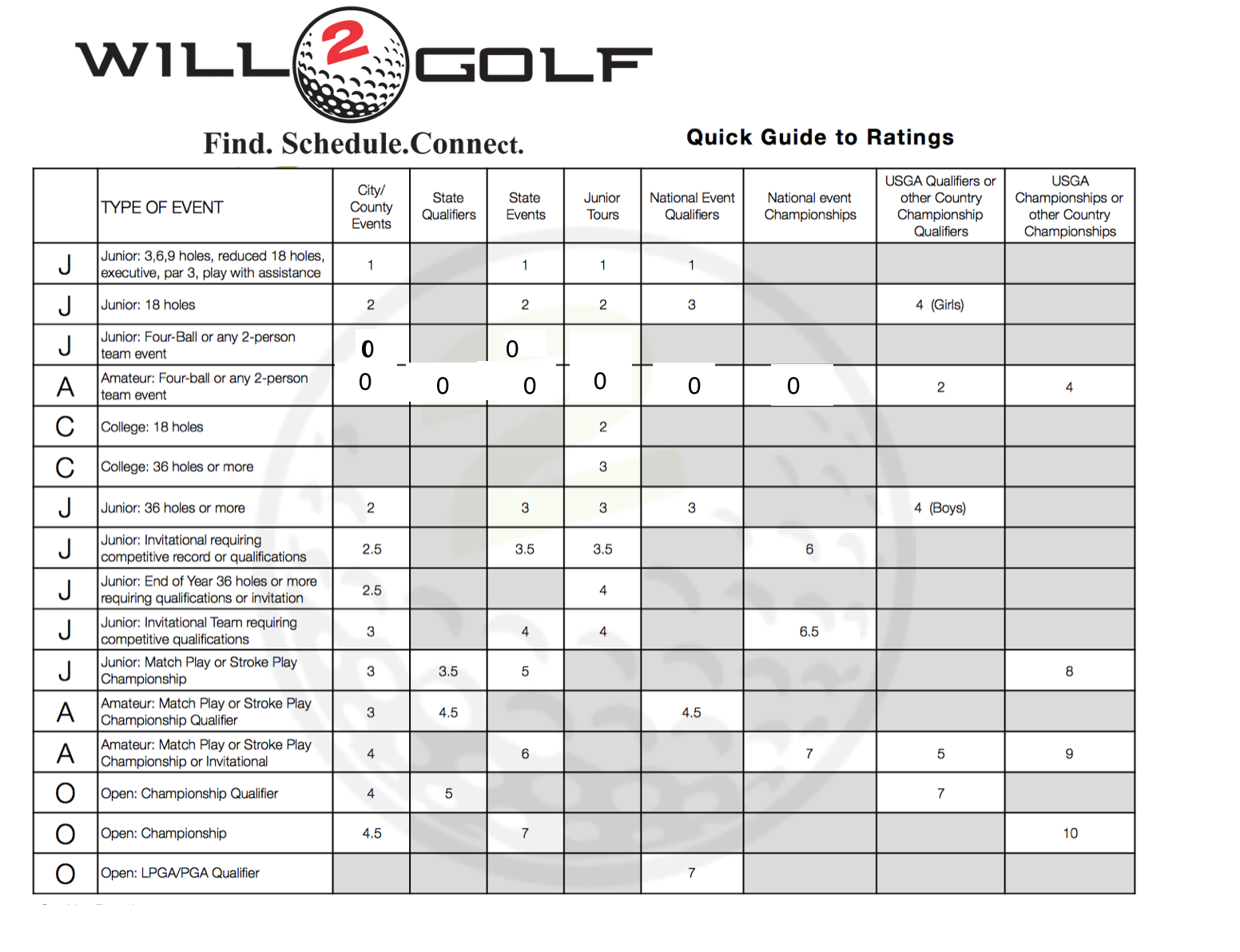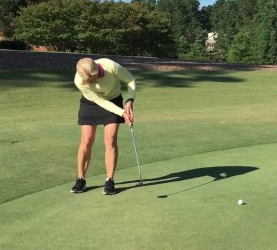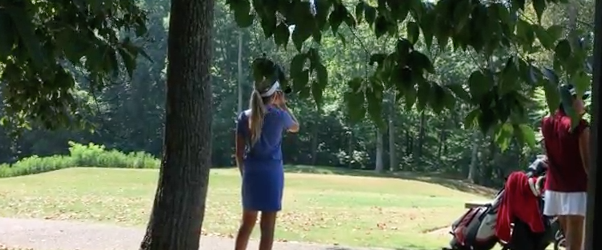Month: August 2017
Conversation with David Leadbetter
Should I ask a Coach to come watch me play?

I am going to play in an event (during the college golf season) that is within 50 miles of several college golf programs that interest me. Should I write and/or call my schools of choice and ask them to come watch me play?
- It is a good idea to look at their team tournament schedules and see if it is an “off week” from competition for them.
- If it is, you can and certainly should phone and follow up with an email. Let them know that you will be at the event and ask them to come watch if they have time. (Note: When you just blanket ask without looking at their info, they know that you are not conscientious.) They appreciate that you look first.
- Include in your email and phone call that you realize they may be having qualifying for their next event, but if their time allows you would appreciate if they would watch you play a few holes.
- You will also want to let them know your tee time. Make it as easy as possible for them to watch you play.
How Resilient are You?

How Resilient are You?
….Golf requires a lot of it!
First let’s start with a definition:
- (of a person or animal) able to withstand or recover quickly from difficult conditions. synonyms: strong, tough, hardy 2. (of a substance or object) able to recoil or spring back into shape after bending, stretching, or being compressed. synonyms: flexible, pliable, supple)
Lexi Thompson is a living definition of resilience in 2017! Did you see her performance at the Solheim Cup vs Anna Nordqvist? She lost the first 4 holes of her singles match and was 4 down at the turn. Team USA only needed 3.5 points to secure the Cup on Sunday. Lexi, being the first match out, could have easily “packed it in” at the turn and let her team cover for her.
Instead, she responded: birdie-eagle-par-birdie-birdie-eagle-birdie to start her back nine. Yes, that is 8-under par in seven holes! She went from 4 down to one up! Nordqvist was just stunned… yet she also dug deep inside to hit a fabulous approach to #18 to secure a tie in the match.
A Resilient Player is a Coach’s Dream
For a college golf coach, one of the worst things you can hear from a team member, much less multiple team members during the same round is the following: “I don’t have it today. I sure hope the rest of the team is playing well.” I would ask them over and over again to push the reset button and just hit one shot and go find it and hit another shot. Hang around long enough to see if things will turn for the better. You never know what the next shot will bring. In college golf (with 4 scores counting), one shot per person saved per 9 holes goes a long way over the course of a tournament and season.
So, be resilient like Lexi in your golf every day. When you want to “pack it in” for the round, remember that you never know what the next swing or hole will bring….maybe a Lexi Stretch! Find events to play and show coaches you are resilient!
Learn a Safety Shot

Learn a Safety Shot
….What is a Safety Shot?
A Safety Shot is a “Go To” shot that may be 10 yards shorter than your normal shot and it may not be as pretty, but you know it is going to be in play. First, what happens when you get nervous? For many people, the hands get tight which makes the arms slower which then causes the club head to lag behind which causes the face to be a bit open at impact. If you body stops and you slap, this open face closes thru impact creating hook spin. So, you end up with a right to right shot or a low left shot. Sound familiar?
You have two choices: Play for the shot to go right or hope you can time the stop and slap perfectly each time. We know that timing can get a little off under pressure so that option is probably not the best choice. So, let’s learn about how to play the shot to the right, on purpose!
I call this shot a broken bat single up the third base line. The key to success is getting the grip (butt end of the club) coming closer to your body on the way down instead of working farther from your body. This will cause the ball to start left. With firmer hands on the grip, the face will cause the ball to slice/slide right. Effectively you will hit a pull-slice. Aim just to the fairway side of the left rough and watch it work back to the middle of the fairway. Note that most golfers hit a push-slice where the butt end of the club works away from them with an open face and the ball travels right to right. Sound familiar?
How do you practice the “On Purpose” Safety/Pull-Slice?
Go to the driving range and Set up your practice on the far left of the practice tee (for a right-handed golfer). It is really great if you have a rough cut or tree line up the left side. Grip down about an inch on your driver and step about an inch closer to the ball at address. As you swing down, feel like your arms are getting closer to your body (not farther away). I imagine my hands going across my toes thru impact. (You can also put an alignment stick on your toe line and feel as if your hands are going to be on the stick thru impact and travel to the left of the line instead of right of the line after impact.) This helps me get my arms into my body. It is all too easy to allow centripetal force to take your arms away from you body.
After you get comfortable on the range, it is time to take it to the course. Go play 9 holes and use your “Safety Shot” on every other tee shot. When I started applying my broken bat single from my practice to play, my scoring average improved. Anytime I have doubt and get nervous on the course, I use my safety shot.
In golf, you have about six critical moments during a round. When your thoughts wander to the future and past, you will have a critical moment as FEAR will creep into your mind. Getting past these critical moments is the key to a successful round. They will not ruin your round if you are prepared. So, get prepared with a Safety Shot!
How to Mentally Prepare for “Those Moments”

How to Mentally Prepare for “Those Moments”
“Those Moments” happen every round. They occur when our mind wanders from the present to the future and past. You know this is going to happen at some point. Stop kidding yourself that it will not. Everyone has a breaking point. At some point, you are going to reach your threshold where your thoughts start to wander and Fear creeps into your mind. Your goal is to get to the point that the scares/uncertainties/unfamiliarities that come from having a putt to win a junior event grow into winning a college event, and maybe even a US Open! The more prepared you are, the less harsh these six critical moments will be. There is less pressure in the moment as you are prepared to handle it mentally.
You can prepare to handle these moments ahead of time in your mind. I’m not saying you should imagine the whole day being a disaster, which it feels like when you are not prepared, but merely close your eyes and picture yourself in a less than desirable situation and go thru your routine. In your mind, pick your starting point and ending point for your golf ball, assess the situation and then feel yourself making a swing with the grip getting into your body and the face staying a bit open thru impact and see the ball get pulled up the third base line then fade back to center field. Breathe yourself thru the situation. Smile, pick up your bag and walk confidently to the next shot. Putting yourself in situations in your mind and having a solid outcome will help build a library of confidence and feelings to draw upon when you need them in a real situation. Remember, your brain does not know the difference between real and imagined. So, do some mental reps and get in some extra practice when you are not at the golf course! Your mental stamina (myelin layer- sheath that forms around nerves, including those in the brain and spinal cord) will grow and better results will occur!
1 Point Putting
FEAR

FEAR
….False Experiences Appearing Real
I was listening to a podcast on National Public Radio about fear. This study was an attempt to show whether things are real or just being set up to APPEAR real (think haunted house). Fear occurs when you move from the present (real) to the future and past with your thoughts. When this happens, your body has a reaction that clouds your critical thinking. We all know when we don’t think clearly, we tend to make poor decisions.
Let’s apply this to golf:
You are standing on the tee of a long par 4 with wind blowing into and left to right with trouble on the right. (This is often a difficult tee shot for a right-handed golfer.) If you are not prepared mentally and physically for this situation, it will be very scary and critical thinking gets clouded and you may make a rash, quick decision that may not end very well. If you are prepared, you can manage the situation and minimize the damage and maybe shine while the rest of the field struggles.
Here is how to prepare Physically and Mentally for that situation:
- Physically be ready with a Safety Shot.
- Mentally prepare your brain, your nerves, and your entire body for Those Moments.
Let Your Twin Play

How many times have you dropped a second ball in practice and hit it better than your first ball? I hear folks say that my twin can play better than me. Well, why not let your twin play? Hit the first shot in your mind, then play your actual shot. Now you are hitting your second shot first! Remember, your mind does not know the difference between real and imagined.

Get In The Zone

This is a great way to start your day upon arrival at the course or after a long wait on the tee during a competitive round.





